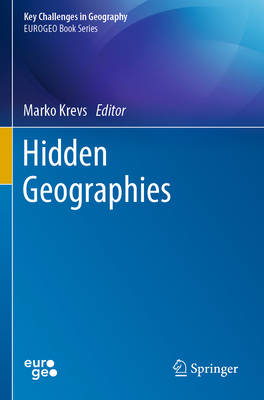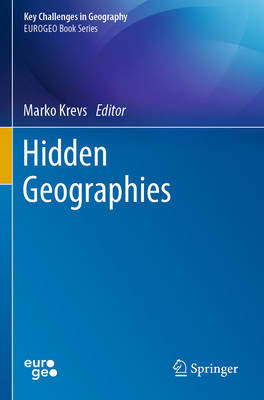
- Afhalen na 1 uur in een winkel met voorraad
- Gratis thuislevering in België vanaf € 30
- Ruim aanbod met 7 miljoen producten
- Afhalen na 1 uur in een winkel met voorraad
- Gratis thuislevering in België vanaf € 30
- Ruim aanbod met 7 miljoen producten
Omschrijving
This book defines and discusses the term "hidden geographies" in two ways: systematically and by presenting a variety of examples of the research fields and topics concerning hidden geographies, with the aim of stimulating further basic and applied research in this area. While the term is quite rarely used in the scientific literature (more often as a figure of speech than to illustrate or problematize its deeper meaning), we argue that hidden geographies are everywhere and many of them have significant impacts on (other) natural and social phenomena and processes, subsequently triggering changes, for example in landscape, economy, culture, health or quality of life.
The introductory section of the book conceptualises hidden geographies and discusses cognitive geography, symbolization of space, and the hidden geographies in mystical literature. Case studies of hidden environmental geographies address soils, air pollution, coastal pollution and the allocation of an astronomical tourism site. Revealing hidden historical and sacred places is illustrated through examples of the visualisation of the subterranean mining landscape, the analysis of the historical road network and trade, border stones and historical spatial boundaries, and the monastic Carthusian space. Hidden urban geographies are discussed in terms of the urban development of an entire city, presenting the role of geography in rescuing architecture, revealing illegal urbanisation, and the quality of habitation in Roma neighbourhoods. Case studies of hidden population geographies shed light on the ageing of rural populations and the impact of spatial-demographic disparities on fertility variations. Discussions of hidden social and economic geographies problematize recent social changes and conflicts in a country, present the implementation of the fourth industrial revolution and borders as hidden obstacles in the organisation of public transport. Hidden geographies are explicitly linkedto perceptions and explanations in case studies that address local responses to perceived marginalisation in a city, the solo women travellers' perceived risk and safety, and hidden geographical contexts of visible post-war landscapes.
Specificaties
Betrokkenen
- Uitgeverij:
Inhoud
- Aantal bladzijden:
- 528
- Taal:
- Engels
- Reeks:
Eigenschappen
- Productcode (EAN):
- 9783030745929
- Verschijningsdatum:
- 23/10/2022
- Uitvoering:
- Paperback
- Formaat:
- Trade paperback (VS)
- Afmetingen:
- 155 mm x 235 mm
- Gewicht:
- 1003 g

Alleen bij Standaard Boekhandel
Beoordelingen
We publiceren alleen reviews die voldoen aan de voorwaarden voor reviews. Bekijk onze voorwaarden voor reviews.










